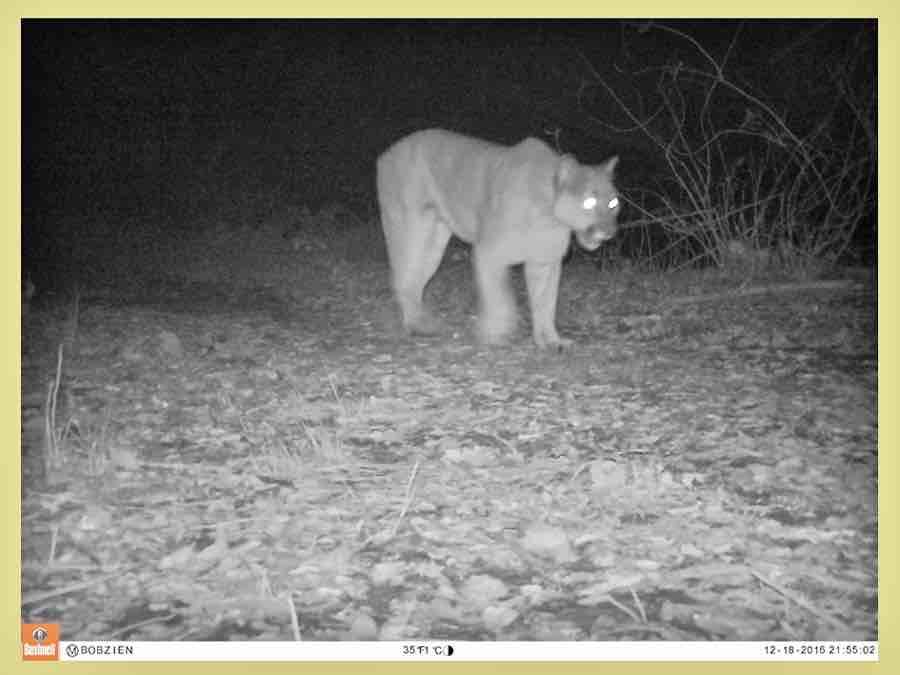A mountain lion traversing the wildlife corridor above the Caldecott Tunnel is captured by the Bobzien study’s remote camera.
A new study conducted by the East Bay Regional Park District reveals the presence of mountain lions (“Big Cats”), an elusive apex predator utilizing the wilderness ridegtop above the Caldecott Tunnel to transit between the open spaces north and south of the tunnel. The study, expanded earlier this year to include the Caldecott Tunnel Corridor, is led by veteran Park District wildlife ecologist and science consultant Steve Bobzien in conjunction with Panthera, a global non-profit dedicated to the preservation of Big Cats and their ecosystems. Technically, mountain lions are not considered part of the Panthera group of Big Cats which include African lions, tigers, leopards and jaguars, all of which roar. In contrast, mountain lions do not roar; instead, they “chirp” and purr. While neither threatened nor endangered today, mountain lions are considered a “specially protected mammal” and are protected from any kind of hunting.
Approximately 20 years ago, the Park District purchased land above the Caldecott Tunnel in an effort preserve the open space and wildland ecosystem. Through the use of remote cameras lined with small LED lights, the study hopes to record and document the presence, habits and biodiversity of mountain lions in peri-urban areas like the Oakland Hills. In addition to mountain lions, the cameras capture images of feral pigs, great horned owls, bobcats, countless grey foxes, and cows. Mountain lions are scavengers, but are selective in their prey.
The Bobzien study focuses on three eco-regions: the mountains of the Hamilton Range, Mount Diablo, and the Oakland Hills. All three are mountain lion habitat, each separated into a kind of island by busy freeways and BART tracks. The goals of the study are to learn how many mountain lions inhabit these areas and find out if they are able to cross from one area to the next. In some cases, GPS radio collars are used to help track individual cats. The cameras are successful in providing brief glimpses of these shy, predominately nocturnal mammals, who are ultra aware of the presence of people.
Conservancy board member and steward Bob Strayer and I were able to catch up with Bobzien at the Contra Costa County Annual Fish and Wildlife Fall Forum in Martinez, where Steve was the guest speaker. One of Steve’s goals is to get people excited and maintain interest in conservation, without which these open space lands cannot be maintained.
Mountain lions are extremely shy of people and rarely observed by hikers. A few sightings, however, were reported this year. Some hikers witnessed a “big cat” near the Clark Kerr Campus in July. More recently, a North Hills resident, Tula Economou, described seeing a large animal with a long, sleek tail, undoubtedly a mountain lion, while out walking her dogs early on the morning of September 25. She said the animal “bounded across the road and in a single graceful motion leapt across a neighbor’s fence to the open space (Vicente Canyon) below.” How to keep yourself safe while protecting wildlife can be found at: wildlife.ca.gov/Keep-Me-Wild/Lion.

